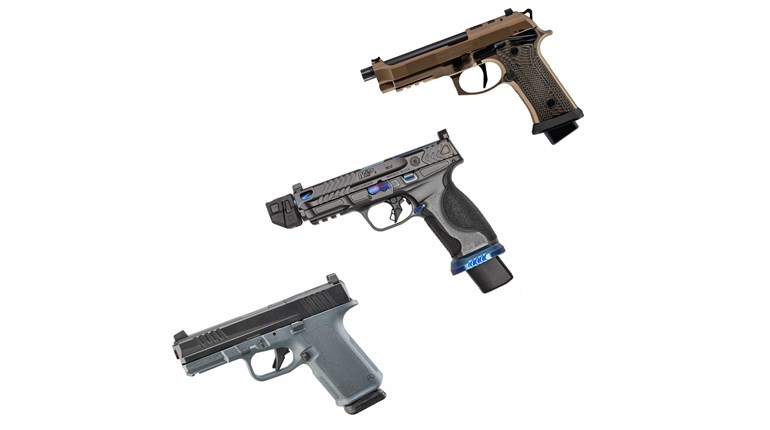
The Ruger New Bearcat Shopkeeper is one such gun.
Ruger originally introduced the Bearcat revolver in 1958, and it quickly became a popular handgun for campers, fishermen and plinkers. Because of its diminutive size, it also became a popular "first" gun for youngsters who were just getting started shooting. In the mid-1970s, Ruger transitioned all of its single-action revolvers to a transfer-bar safety and, at the same time, the Bearcat was discontinued. However, the popularity of this little six-gun just wouldn't let it die and, in 1993, Ruger reintroduced the Bearcat, this time with a transfer-bar safety. The latest iteration of the Ruger New Bearcat is the Shopkeeper, as commissioned by Lipsey's, amajor Ruger distributor.
The New Bearcat Shopkeeper is similar to all other Bearcats in that it is a .22 Long Rifle caliber, six-shot, single-action revolver with wood stocks and fixed sights. However, that is about where the similarity begins to fade. Instead of the traditional 4-inch barrel, the Shopkeeper sports a 3-inch version with 1:16-inch rifling. The most readily apparent difference between the two guns is the Shopkeeper's birdshead grip frame. Manufactured entirely of stainless steel, the Shopkeeper even sports a stainless-steel ejector-rod housing that matches the appearance of the rest of the gun.
Not as readily apparent, but just as important, are some changes to the revolver's ejection system. In order to accommodate the shortened barrel and ejector rod, a button-head cylinder pin is installed on the Shopkeeper along with a crescent-shaped thumb piece on the ejector rod. They allow the ejector rod to make a longer stroke that will more reliably punch the empty cases out of the cylinder.
The test sample Ruger Bearcat Shopkeeper weighed in at 23 ounces., with an overall length of 7.5 inches. The trigger broke cleanly at a pull weight of 3 pounds, 9 ounces. Stocks were a reddish brown laminated wood with silver Ruger medallions.
Even with the transfer-bar safety, the Bearcat Shopkeeper is loaded and disassembled in the manner of old-model single-actions. To allow the cylinder to rotate, the hammer is placed on half-cock. When that is done, the cylinder is lined up with the loading gate so that cartridges may be loaded into each chamber, or spent cartridges ejected. At that point, the cylinder may also be removed by depressing the cylinder-release pin, in the front of the frame, and pulling the cylinder pin forward out of the frame.
In testing the Shopkeeper, three different .22 Long Rifle loads were used. They were the 40-gr. CCI Mini-Mag hollow-point, the Remington 40-gr. High-Velocity hollow-point, and the Winchester 40-gr. Power-Point. Accuracy testing was conducted at 7 yards using sandbags for a rest. Five consecutive, five-shot groups were shot with each load, and the Ruger Bearcat Shopkeeper posted acceptable groups for this type of handgun. All three loads also shot to point-of-aim. The Winchester Power-Point edged the other two out by averaging 3.03-inch groups.
Subjectively, the New Bearcat Shopkeeper was found to be a very comfortable revolver to shoot. The birdshead grip fit quite nicely into the shooting hand. And, probably due to the fact that the ejector-rod housing was stainless steel instead of an alloy, the revolver had a slight muzzle-heaviness that made it point very quickly and naturally. The stainless steel sights, which do not give the best sight picture, especially in bright sunlight, were balanced by the clean-breaking trigger.
The New Bearcat Shopkeeper lends itself to informal plinking and target practice. In addition, it is nearly perfect for slipping into a pants pocket during a leisurely jaunt in the woods, or while enjoying a day at the fishing hole, for use against poisonous snakes. With that in mind, however, one can't help but wish for the Shopkeeper in a .22 WMR chambering.
Regardless, it is one of those guns that, once you pick it up, it is hard to put down. It just feels right. As mentioned earlier, the Ruger New Bearcat Shopkeeper was commissioned by Lipsey's and, therefore, is only available through a retail store that deals with that company. If a local gun shop doesn't order from Lipsey's, visit the Lipsey's website at www.lipseys.com to find the closest retailer that does.







































